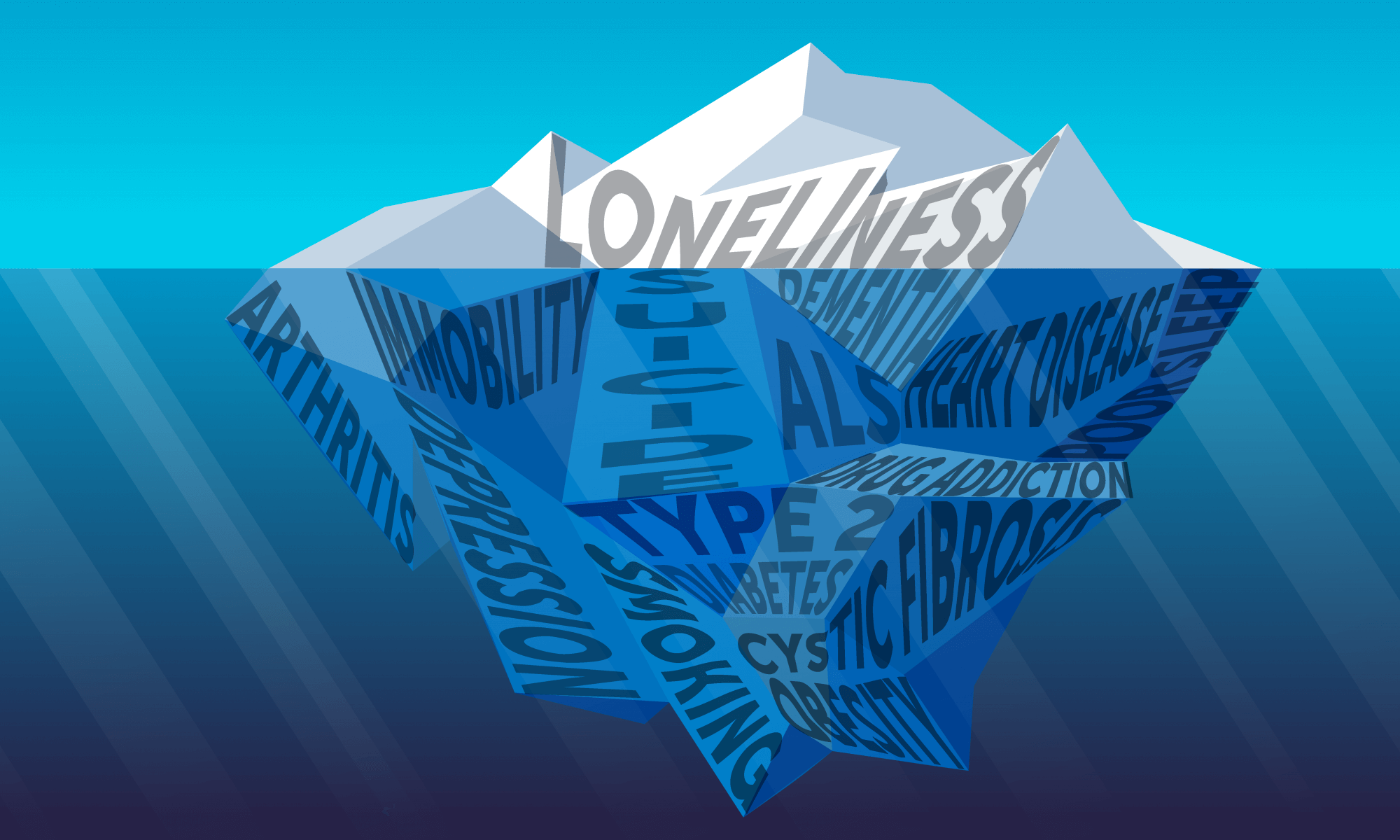Health experts have long argued that poor behaviors are responsible for the majority of poor health in the U.S. population. A 2018 article published by the International Journal of Environmental Research and Public Health notes that the U.S. Centers for Disease Control (CDC) estimates chronic diseases account for nearly 75 percent of aggregate (U.S.) healthcare spending or an estimated $5,300 per person annually. The article goes on to state that:
“Nearly half (approximately 45%, or 133 million) of all Americans suffer from at least one chronic disease, and the number is growing. Chronic diseases—including, cancer, diabetes, hypertension, stroke, heart disease, respiratory diseases, arthritis, obesity, and oral diseases—can lead to hospitalization, long-term disability, reduced quality of life, and death. In fact, persistent (chronic) conditions are the nation’s leading cause of death and disability.”
It seems strange that “loneliness” isn’t listed as a “chronic condition” by the U.S. CDC when just one year ago, in partnership with Ipsos, Cigna conducted a national online survey of 20,000 U.S. adults that explored the impacts of loneliness on health – the headline of the report read: “Loneliness At Epidemic Levels In America”. In the survey, Cigna pointed out that:
- Nearly half of Americans report feeling alone
- Only half have meaningful, in-person social interactions on a daily basis
- Gen Z (ages 18-22) is the loneliest and, ironically, the Greatest Generation (ages 72+) is the least lonely
The survey also stated that people reporting being less lonely are more likely to be in good overall physical and mental health.
The health impacts associated with loneliness are well documented. The impacts include:
- Raising levels of stress hormones
- Increased inflammation
- Increased risk of heart disease, Type 2 diabetes, dementia, behavioral-related conditions (including drug addiction, obesity, smoking, and poor sleep), and mental health conditions (including depression, immobility, and attempted suicide)
Maybe it’s time we add “loneliness” to the top of the list of chronic conditions impacting ill health.
Melting Away Chronic Loneliness to Improve Health Below the Surface
Backed by ample research revealing the negative impacts of loneliness on health, the health industry has a grand opportunity to treat the loneliness in plain sight, as much as – and perhaps before focusing on – health conditions that haven’t yet surfaced. What if every preventative screen, health scan, online coaching discussion, health app, employer wellness program, and benefits enrollment process began with the question: do you ever feel lonely?
Focusing on identifying and addressing loneliness is beginning to get the attention of health care providers, investors, and solutions vendors. Following are just a few examples of companies who are warming up to the idea of melting away loneliness to improve health:
- Cigna, among other support services for their employees, offers a Caregiver Leave Program that provides up to four weeks of paid leave for employees caring for others including child bonding, caring for a seriously ill family member or qualifying military support
- CareMore, an American health-care provider owned by Anthem, launched a dedicated scheme to reframe loneliness as a treatable medical condition. Their “Togetherness” program started with identifying the company’s members that self-reported as living alone and having poor to no support networks and calling them up. They also developed a loneliness scale which incorporates loneliness data into the patient’s electronic medical record and is accessible by dietitians, social workers and physicians.
- One Caring Team calls and checks in on lonely elderly relatives for a monthly fee. The Silver Line, a similar (but free) helpline, is run by a British charity. Launched in 2013 it takes nearly 500,000 calls a year. Its staff in their Blackpool headquarters are supported by volunteers across the country in the Silver Friend service, a regular, pre-arranged call between a volunteer and an old person.
- Help-Full is a community network, built around the notion of addressing loneliness in adults – and members of all ages – can post requests to give or receive services, connect with other to share, learn, and interact with. Tokens can be earned and exchanged for services.
- The nonprofit, Evolve Foundation, has a fund called the Conscious Accelerator to combat loneliness, purposelessness, fear and anger spreading throughout the world through technology. Some of the organizations the fund is supporting include; Edovo – a tablet-based communication and education platform for incarcerated individuals, helping them improve their lives and unlock their potential and Parent Lab – an app to help parents connect and grow with their children.
- Paro has a cuddly robotic seal that provides companionship to hospitalized patients.
- Pepper is a human-ish robot made by a subsidiary of SoftBank, a Japanese conglomerate, that can follow a person’s gaze and adapt its behavior to connect with them, assist them, and share knowledge with them.
- Liminal VR teamed up with Medibank, an Australian insurance company, to build a virtual experience for lonely people who cannot leave their hospital beds.
Let’s make 2019 the year that loneliness is approached as the tip of the iceberg of poor health. It’s in plain view just waiting for more innovative health technologies and strategies to turn up the heat and lessen its impact on poor health!
HLTH: The Future of Healthcare. Won’t you join us in reimaging and reinventing health – for all?
Catch up on all things HLTH by subscribing to our YouTube channel and following us on Twitter @HLTHevent.

